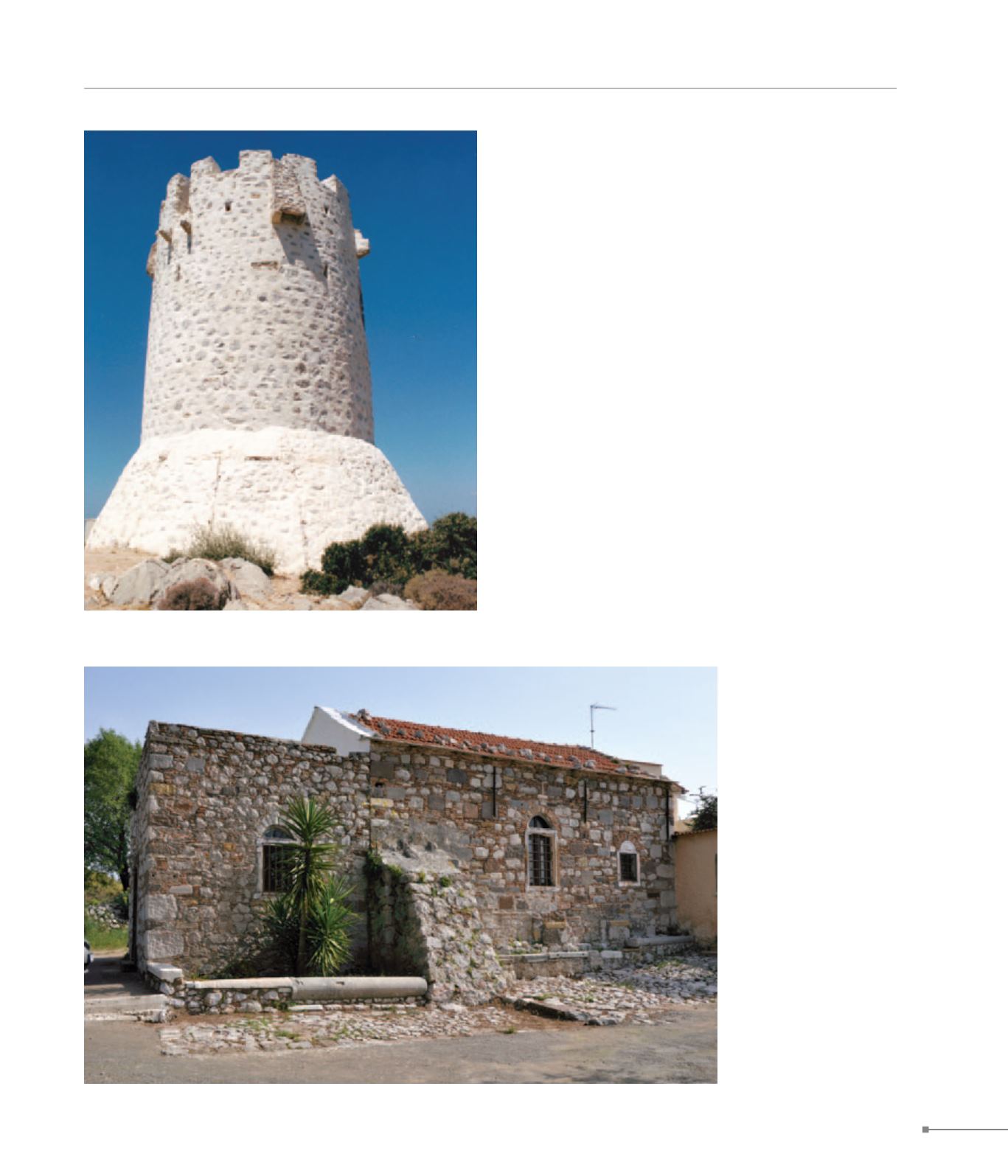
573. Chios
573. Chios
THE ISLANDS
341
573. Chios, Daphnonas,
Vestarhato, Panagia (Χίος,
Δαφνώνας, Βεστερχάτο,
Παναγία)
573. Chios, vigla at Trachili at Lithio (Χίος, βίγλα στη θέση Τραχήλι
Λιθίου)
clergy in 1381. During the Genoese domination it was trans-
ferred to the Velasti family, who sold it in 1679 along with the
church to the Nea Moni monastery. Kanavoutsato was the es-
tate of the noble Kanavoutsos family, originating from Byzan-
tium. From the large estate all that survive are the ruins of a
medieval tower, a stone ditch and the circular cisterns provid-
ing water from a spring.
Mastichochoria.
In the Mastichochoria region are the best-preserved medieval
villages on S Chios, such as Pyrgi (22), Olympoi (18), Mesta
(17), as well as not so well-preserved villages, like Vessa (14),
Kalamoti (24), Elata (15). These fortified villages were founded
in the 14th-15th c. by Genoese governors, in a systematic re-
arrangement of the island, and were a result of the merging
of smaller villages. Their main goal was to protect the mastic
monopoly, and control mastic growers. The establishment of
the villages is also associated with the prevailing atmosphere
of insecurity due to piracy and the immediate proximity of the
Turks. These medieval castellated villages feature an outer
defensive wall formed by the external walls of the marginal
houses and have only one main gate allowing access to the
interior. At the corners of the wall there are circular turrets,
known as “pyrgopoula” (small towers). Within the villages
maze-like alleys developed, partly shaded by transverse arch-
es, and were directly connected with the main square, where
the central defence tower dominated, serving as the last ref-
uge in case of invasion. The central tower at Pyrgi featured a


